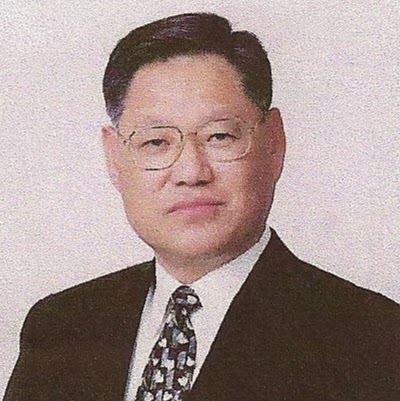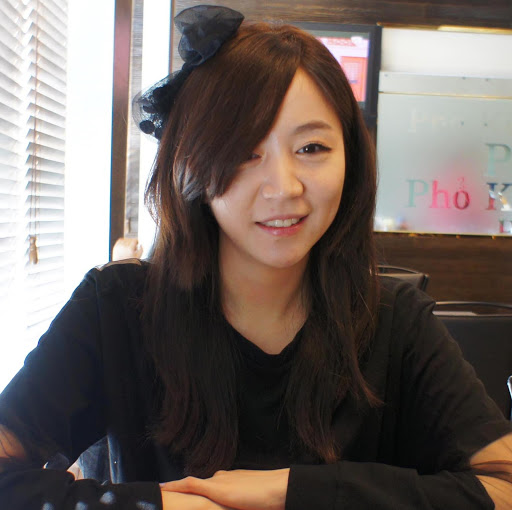Kyung Hee Lee
age ~56
from Las Vegas, NV
- Also known as:
-
- Kyung H Lee
- Kyung S Lee
- Kuyung H Lee
- Kyunghee Lee
- Kyung Heelee
Kyung Lee Phones & Addresses
- Las Vegas, NV
- Oklahoma City, OK
- Cleveland, OK
Vehicle Records
-
Kyung Lee
view source -
Address:3279 E Flamingo Rd APT 107, Las Vegas, NV 89121
-
VIN:JN8AZ08T47W521405
-
Make:NISSAN
-
Model:MURANO
-
Year:2007
Medicine Doctors

Dr. Kyung A Lee, Las Vegas NV - DMD (Doctor of Dental Medicine)
view sourceSpecialties:
Dentistry
Address:
7310 Smoke Ranch Rd Suite F, Las Vegas, NV 89128
7022547507 (Phone)
7022547507 (Phone)
Languages:
English

Kyung M. Lee
view sourceSpecialties:
Family Medicine
Work:
Atlantic Medical GroupWest Parkway Medical
230 W Pkwy STE 10, Pompton Plains, NJ 07444
9738350800 (phone), 9736162766 (fax)
230 W Pkwy STE 10, Pompton Plains, NJ 07444
9738350800 (phone), 9736162766 (fax)
Languages:
English
Spanish
Spanish
Description:
Ms. Lee works in Pompton Plains, NJ and specializes in Family Medicine. Ms. Lee is affiliated with Chilton Medical Center.

Kyung Woon Lee
view sourceSpecialties:
Family Medicine
Work:
Southwest Georgia Health CareCochran Medical Center
148 E Peacock St, Cochran, GA 31014
4789344988 (phone), 4789344989 (fax)
148 E Peacock St, Cochran, GA 31014
4789344988 (phone), 4789344989 (fax)
Languages:
English
Description:
Mr. Lee works in Cochran, GA and specializes in Family Medicine. Mr. Lee is affiliated with Houston Medical Center.

Kyung J. Lee
view sourceSpecialties:
Otolaryngology
Work:
Texas Health Care PLLCTexas Health Care
923 Pennsylvania Ave STE 100, Fort Worth, TX 76104
8179200484 (phone), 8179200068 (fax)
923 Pennsylvania Ave STE 100, Fort Worth, TX 76104
8179200484 (phone), 8179200068 (fax)
Languages:
English
Spanish
Spanish
Description:
Ms. Lee works in Fort Worth, TX and specializes in Otolaryngology. Ms. Lee is affiliated with Baylor All Saints Medical Center, Baylor Surgical Hospital Fort Worth, John Peter Smith Health Network and Texas Health Harris Methodist Hospital Fort Worth.

Kyung Ryul Lee
view sourceSpecialties:
General Practice
Internal Medicine
Cardiology
Internal Medicine
Cardiology
Education:
The University of Texas Southwestern (1989)

Kyung Joon Lee
view sourceSpecialties:
Physical Medicine & Rehabilitation
Neuromusculoskeletal Medicine, Sports Medicine
Anatomic Pathology
Neuromusculoskeletal Medicine, Sports Medicine
Anatomic Pathology
Education:
Yonsei University (1968)

Kyung Hui Kang Lee
view sourceSpecialties:
Psychiatry
Child & Adolescent Psychiatry
Child & Adolescent Psychiatry
Education:
Ewha Womans University (1972)
License Records
Kyung Joon Lee
License #:
23534 - Active
Issued Date:
Dec 31, 2004
Renew Date:
Dec 1, 2015
Expiration Date:
Nov 30, 2017
Type:
Certified Public Accountant
Kyung Hee Lee
License #:
1201131242
Category:
Cosmetologist License
Kyung M Lee
License #:
1201112848
Category:
Cosmetologist License
Kyung Jae Lee
License #:
2705134321
Category:
Contractor
Kyung Yun Lee
License #:
MT000668T - Expired
Category:
Medicine
Type:
Graduate Medical Trainee
Us Patents
-
Antiplasmin Cleaving Enzyme
view source -
US Patent:7309774, Dec 18, 2007
-
Filed:Feb 6, 2004
-
Appl. No.:10/774242
-
Inventors:Patrick A. McKee - Oklahoma City OK, US
Kyung N. Lee - Oklahoma City OK, US
Kenneth W. Jackson - Edmond OK, US
Victoria J. Christiansen - Oklahoma City OK, US -
Assignee:The Board of Regents of the University of Oklahoma - Norman OK
-
International Classification:A61K 35/14
-
US Classification:530380, 530350
-
Abstract:Human α-antiplasmin (αAP) is the major inhibitor of the proteolytic enzyme plasmin that digests fibrin. Two forms of αAP circulate in human plasma: a 464-residue protein, which we have termed “pro”-form, or αAP, and an N-terminally-shortened 452-residue “activated”-form, or αAP. The latter becomes crosslinked to fibrin by activated factor XIII about 5-fold more rapidly than αAPand makes fibrin resistant to digestion by plasmin. A new human plasma proteinase has been identified herein that cleaves the Pro12-Asn13 bond of αAPto yield αAP. This enzyme is identified herein as Antiplasmin Cleaving Enzyme (APCE).
-
Substrates And Inhibitors Of Antiplasmin Cleaving Enzyme And Methods Of Use
view source -
US Patent:20080057491, Mar 6, 2008
-
Filed:Jun 6, 2007
-
Appl. No.:11/811002
-
Inventors:Patrick McKee - Oklahoma City OK, US
Kyung Lee - Oklahoma City OK, US
Kenneth Jackson - Edmond OK, US
Victoria Christiansen - Oklahoma City OK, US -
International Classification:C12Q 1/00
C07K 14/00
C07K 5/00
C07K 7/06
C07K 7/08 -
US Classification:435004000, 530324000, 530325000, 530326000, 530327000, 530328000, 530330000
-
Abstract:The present invention is directed toward inhibitors of antiplasmin cleaving enzyme for use in various therapies related to fibrin and α-antiplasmin, and to substrates of APCE, which may be used, for example, in screening methods for identifying such inhibitors. The present invention is further directed to methods of treating or inhibiting atherosclerosis and thrombus disorders by altering the rations of types of plasma α-antiplasmin.
-
Methods Of Screening For Inhibitors Of Antiplasmin Cleaving Enzyme
view source -
US Patent:20080118933, May 22, 2008
-
Filed:Nov 20, 2007
-
Appl. No.:11/986058
-
Inventors:Patrick McKee - Oklahoma City OK, US
Kyung Lee - Oklahoma City OK, US
Kenneth Jackson - Edmond OK, US
Victoria Christiansen - Oklahoma City OK, US -
International Classification:G01N 33/53
C12N 9/68 -
US Classification:435007100, 435217000
-
Abstract:Human α-antiplasmin (αAP) is the major inhibitor of the proteolytic enzyme plasmin that digests fibrin. Two forms of αAP circulate in human plasma: a 464-residue protein, which we have termed “pro”-form, or αAPand an N-terminally-shortened 452-residue “activated”-form, or αAP. The latter becomes crosslinked to fibrin by activated factor XIII about 5-fold more rapidly than αAPand makes fibrin resistant to digestion by plasmin. A new human plasma proteinase has been identified herein that cleaves the Pro12-Asn13 bond of αAPto yield αAP. This enzyme is identified herein as Antiplasmin Cleaving Enzyme (APCE). Novel inhibitors of circulating APCE can diminish αAP inhibitory capacity within forming fibrin or blood clots thereby making fibrin deposits or blood clots more susceptible to removal by plasmin. Patients who are susceptible to atherosclerotic plaque formation or are susceptible to developing thrombi that compromise organ function will benefit by therapies providing such inhibitors on a long term basis.
-
Substrates And Inhibitors Of Antiplasmin Cleaving Enzyme And Fibroblast Activation Protein And Methods Of Use
view source -
US Patent:20110144037, Jun 16, 2011
-
Filed:Dec 15, 2010
-
Appl. No.:12/969161
-
Inventors:Patrick A. McKee - Oklahoma City OK, US
Kenneth W. Jackson - Edmond OK, US
Kyung N. Lee - Oklahoma City OK, US
Victoria J. Christiansen - Oklahoma City OK, US -
International Classification:A61K 38/07
C07K 5/083
C07D 233/54
C07D 209/52
C07C 229/04
C07C 229/26
C07K 5/097
C07K 5/10
C07K 5/103
C07K 5/117
C07K 7/06
A61K 38/06
A61K 38/08
A61K 31/195
A61K 31/198
A61K 31/4172
A61K 31/4035
C12N 5/071
A61P 9/10
A61P 35/00 -
US Classification:514 216, 530331, 5483391, 548516, 562553, 562561, 562562, 562563, 530330, 530329, 530328, 514 219, 514 218, 514 217, 514561, 514564, 514568, 514399, 514416, 435325
-
Abstract:The presently disclosed and claimed inventive concepts include inhibitors of antiplasmin cleaving enzyme (APCE) and fibroblast activation protein alpha (FAP) which can be used in various therapies related to disorders of fibrin and α-antiplasmin and abnormal cell proliferation. The presently disclosed and claimed inventive concepts also include substrates of APCE and FAP, which may be used, for example, in screening methods for identifying such inhibitors. The presently disclosed and claimed inventive concepts further include, but are not limited to, methods of treating or inhibiting atherosclerosis and thrombus disorders by altering the ratios of types of plasma α-antiplasmin and to methods of treating conditions involving abnormal cell proliferation such as cancers.
-
Substrates And Inhibitors Of Antiplasmin Cleaving Enzyme And Fibroblast Activation Protein And Methods Of Use
view source -
US Patent:20170066800, Mar 9, 2017
-
Filed:Nov 21, 2016
-
Appl. No.:15/357435
-
Inventors:- Norman OK, US
Kenneth W. Jackson - Edmond OK, US
Kyung N. Lee - Oklahoma City OK, US
Victoria J. Christiansen - Oklahoma City OK, US -
International Classification:C07K 5/062
C07K 5/11
C07K 5/083
C07K 7/02
C07K 5/02 -
Abstract:The presently disclosed inventive concept(s) include inhibitors of antiplasmin cleaving enzyme (APCE) and fibroblast activation protein alpha (FAP) which can be used in various therapies related to disorders of fibrin and α-antiplasmin and abnormal cell proliferation. The presently disclosed inventive concept(s) also include substrates of APCE and FAP, which may be used, for example, in screening methods for identifying such inhibitors. The presently disclosed inventive concept(s) further include, but are not limited to, methods of treating or inhibiting atherosclerosis and thrombus disorders by altering the ratios of types of plasma α-antiplasmin and to methods of treating conditions involving abnormal cell proliferation such as cancers.
-
Substrates And Inhibitors Of Antiplasmin Cleaving Enzyme And Fibroblast Activation Protein And Methods Of Use
view source -
US Patent:20150141660, May 21, 2015
-
Filed:Jan 8, 2015
-
Appl. No.:14/592178
-
Inventors:- Norman OK, US
Kenneth W. Jackson - Edmond OK, US
Kyung N. Lee - Oklahoma City OK, US
Victoria J. Christiansen - Oklahoma City OK, US -
International Classification:C07K 5/02
-
US Classification:548405
-
Abstract:The presently disclosed and claimed inventive concepts include inhibitors of antiplasmin cleaving enzyme (APCE) and fibroblast activation protein alpha (FAP) which can be used in various therapies related to disorders of fibrin and α-antiplasmin and abnormal cell proliferation. The presently disclosed and claimed inventive concepts also include substrates of APCE and FAP, which may be used, for example, in screening methods for identifying such inhibitors. The presently disclosed and claimed inventive concepts further include, but are not limited to, methods of treating or inhibiting atherosclerosis and thrombus disorders by altering the ratios of types of plasma α-antiplasmin and to methods of treating conditions involving abnormal cell proliferation such as cancers.
Lawyers & Attorneys

Kyung Cheon Lee - Lawyer
view sourceLicenses:
New York - Currently registered 2006
Education:
University of Minnesota Law School

Kyung Jin Lee - Lawyer
view sourceAddress:
Kdb Bank
Licenses:
Wisconsin - Good Standing 2010
Education:
University of Wisconsin
Graduated - 2010
Graduated - 2010
Languages:
English

Kyung Yoon Lee - Lawyer
view sourceAddress:
Kim & Chang
237031181x (Office)
237031181x (Office)
Licenses:
New York - Currently registered 2006
Education:
Stanford Law School

Kyung Don Lee - Lawyer
view sourceAddress:
Shin & Kim
8223161677 (Office)
8223161677 (Office)
Licenses:
New York - Currently registered 2000
Education:
Columbia

Kyung Hwan Lee - Lawyer
view sourceAddress:
The Export-Import Bank of Korea
Licenses:
New York - Currently registered 1998
Education:
Cornell
Name / Title
Company / Classification
Phones & Addresses
Manager
O'Connor Asset LLC
Kyung Lee DMD
Dentists · Oral Surgeons
Dentists · Oral Surgeons
7310 Smoke Rnch Rd, Las Vegas, NV 89128
7022547507
7022547507
JK TRADING, INC
EVANS DRY CLEANERS, INC
IMMANUEL MISSION SCHOOL OF COLUMBUS, LLC
HYOSHIN, INC
President, Treasurer
Koritalchi Universal Inc
8635 W Sahara Ave, Las Vegas, NV 89117
Manager
Power of Jesus, LLC
3900 Paradise Rd, Las Vegas, NV 89169
Myspace

Kyung Ah Lee
view sourceBirthday:
1953

Kyung Ah Lee
view sourceBirthday:
1953
Flickr
Classmates

Roosevelt High School, Ho...
view sourceGraduates:
Dennis Ah Yo (1968-1969),
Melvin Minakami (1955-1958),
Nam Kyung Lee (1996-1998),
Anthoney Lowry (1987-1991)
Melvin Minakami (1955-1958),
Nam Kyung Lee (1996-1998),
Anthoney Lowry (1987-1991)
Googleplus

Kyung Lee
Education:
University of Southern California - Piano Performance

Kyung Lee
Work:
Spinwave Photography - Owner/Photographer (2005)

Kyung Lee
Work:
Montgomery County, MD Government

Kyung Lee

Kyung Lee

Kyung Lee

Kyung Lee

Kyung Lee

Kyung Ah Lee
view source
Kyung Ah Lee
view sourceFriends:
Sarah Williams, Choon Mi Kwak, Said Saleh, Heejin Woo, Helmy Bayasud

Lovely Kyung Ah Lee
view sourceFriends:
Qian Song, Sumin Go, Madeleine Valk, Nicholas Knibbe, Lyndal Jolly

Lee Kyung Ah
view sourceFriends:
Isaac Lee, Max Woo-lim Park, Eun Ah Lee, Alice Liu

Kal Kyung Ah Lee
view source
Karen Kyung Ah Lee
view sourceNews

Scientists discovered a new molecule that kills even the deadliest cancer
view source- omprehensive Cancer Center at UT Southwestern Medical Center, as well as Dr. Ratna Vadlamudi, professor of obstetrics and gynecology at UT Health San Antonio. Dr. Tae-Kyung Lee, a former UTD research scientist in Ahn's Bio-Organic/Medicinal Chemistry Lab, was also involved in synthesizing the compound.
- Date: Jun 10, 2022
- Category: Health
- Source: Google

Infinitesimal Odds: A Scientist Finds Her Child's Rare Illness Stems From the Gene She Studies
view source- Why is she suffering so much? her mother, Soo-Kyung Lee, anguished. Brain scans, genetic tests and neurological exams yielded no answers. But when an email popped up suggesting that Yuna might have a mutation on a gene called FOXG1, Soo-Kyung froze.
- Date: Apr 23, 2018
- Category: Health
- Source: Google
Get Report for Kyung Hee Lee from Las Vegas, NV, age ~56







